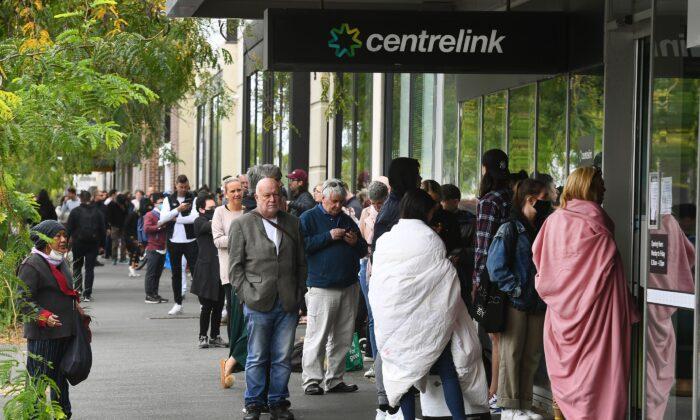“If previous periods of high unemployment are any guide, the effect on the young is likely to be felt throughout their working life, and those who leave the labour force when close to retirement age may never return,” said Professor Matthew Gray, one of the study’s co-authors.
Employment rates from February to March have plunged to “unprecedented” lows; from 62 percent down to 58.9 percent. This equates to the entire population of the Gold Coast (Australia’s largest non-capital city)—a total of 670,000 people.
According to the study, the average household after-tax weekly income between February and April dopped by 9.1 percent.
Per person, income fell by 10.4 percent ($740) per week in February to $663 per week in April.
There were larger reductions of earnings found for Gen Z, however, the decline wasn’t as low for those who lived in the most advantaged neighborhoods.
If these figures continue for the next 12 months, the projected loss of earnings for Australian households will top $102 billion per annum.
In contrast with the vast array of losses, Australians at the lower end of the income scale had an increase of 33.5 percent, from $160 in February to $213 in March.
“This is probably due to the economic hardship measures the Government has put in place in the face of the pandemic,” Gray said.





